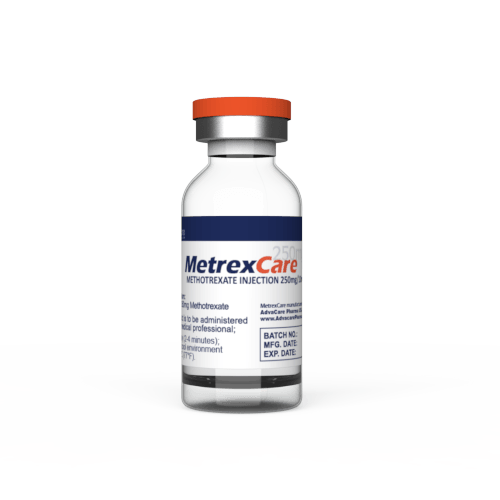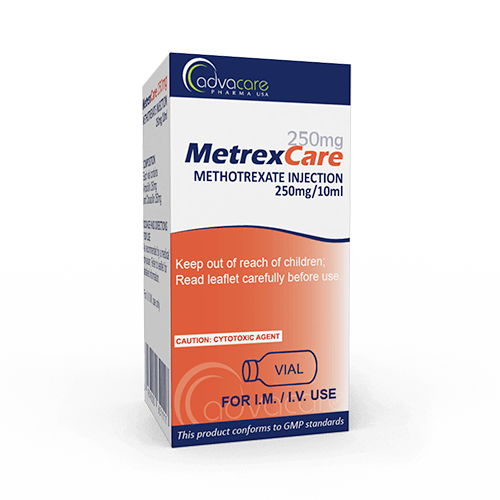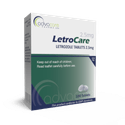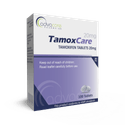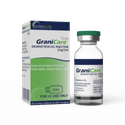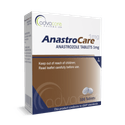- Home›
- Pharmaceuticals›
- Oncology Products›
- Oncology Injections›
- Methotrexate Injection
Methotrexate Injection
Dosage
Packaging
What is Methotrexate?
Active Ingredients: Methotrexate
Methotrexate Injection is an antimetabolite and antifolate drug used to treat certain types of cancer. It is also indicated for the treatment of autoimmune diseases like severe psoriasis and rheumatoid arthritis. Methotrexate can also be used as an abortifacient in the induction of medical abortions.
Methotrexate works by interfering with the growth of certain cells of the body. It is particularly effective against cells that reproduce quickly, such as cancer cells, bone marrow cells, and skin cells. The active ingredient is also an immunosuppressant and therefore works to treat rheumatoid arthritis by decreasing immune system activity.
AdvaCare Pharma is a GMP-certified producer and exporter of Methotrexate Injection. We offer a wide range of high-quality and cost-effective oncology medications that are available for distribution. These medications have been manufactured in our facilities in China, India, and the USA.
Why choose us as your Methotrexate manufacturer?
AdvaCare Pharma manufactures Methotrexate Injection, one of 40+ oncology treatments, according to rigorous GMP protocols at our state-of-the-art production facility. We are committed to producing quality-assured, cost-effective cancer treatments that meet the highest industry standards and are readily available to cancer patients worldwide. As an established Methotrexate manufacturer, we supply pharmaceutical distributors, hospitals and government institutions with reliable cancer drugs.
Uses
What is Methotrexate used for?
It is used to treat various types of cancer. It can be used alone or with other drugs to treat cancers of the:
- breast
- certain types of lymphoma
- head and neck
- leukemia
- lung
- skin
Methotrexate is also used to treat some autoimmune diseases like severe psoriasis and rheumatoid arthritis. This drug can also be used off-label as an abortifacient in the induction of medical abortions.
How should Methotrexate Injection be used?
This medication is manufactured as a powder and stored in a vial. The powder is to be prepared into a solution, and after reconstitution, it should be administered by injection into a muscle or vein.
What dose should be given?
Adult Dosing For acute lymphoblastic leukemia (ALL), the usual dose is 10-5000mg/m² per dose IV.
Alternatively, a dose of 20-30mg/m² per dose can be administered IM every week. The dose should be given once on a specified day(s) of the cycle per regimen. The dose and frequency should be individualized based on the disease state, patient risk, any concurrent drugs, treatment phase, and the response to treatment. Leucovorin rescue should be considered for high-dose therapy (>500mg/m² per dose) and intermediate-dose regimen (100-500mg/m² per dose). It is advised to use a preservative-free formulation during a high-dose regimen.
For treatment of meningeal leukemia, the usual dose is 12-15mg, administered intrathecally. The dose should be administered every 2-4 days, for up to 2 times per week. Only preservative-free formulation should be used for this treatment. Therapy should be continued until CSF is normal, which should be followed by 1 additional dose. For patients with Down syndrome, leucovorin rescue should also be administered.
For prophylaxis of meningeal leukemia, the usual dose is 12-15mg, administered intrathecally. The maximum dosage is 1 dose per week. Only preservative-free formulation should be used for this treatment. For patients with Down syndrome, leucovorin rescue should also be administered.
For non-Hodgkin lymphoma (monotherapy), the usual dose is 8000mg/m² per dose IV. This dose should be given once on a specific day during the cycle per regimen.
For non-Hodgkin lymphoma (combination therapy), the usual dose is 3000mg/m² per dose IV, given on a specific day of the cycle per regimen. Alternatively, a dose of 3500mg/m² or 8000mg/m² IV can be used.
For osteosarcoma (multi-drug chemo regimen), the usual dose is 12g/m² per dose IV. Each dose should be given once during weeks 4, 5, 6, 7, 11, 12, 15, 16, 29, 30, 44, and 45. Therapy should begin 4 weeks after surgery. The maximum dosage is 20g per dose. The dose should be individualized based on peak serum concentrations, the patient’s health issues, and prior treatments. At the end of the infusion, if peak serum concentrations are < 10 mol/L, subsequent doses may be increased to 15g/m² per dose.
For breast cancer (multi-drug chemo regimen), the usual dose is 40mg/m² IV. The dose should be administered once on days 1 and 8 of a 28-day cycle. Therapy should continue for 6 cycles.
For squamous cell head or neck cancer, the usual dose is 40-60mg/m² IV. The dose should be given once per week.
For gestational trophoblastic neoplasia (multi-drug chemo regimen), the usual dose is as follows:
- Low-risk disease: 30-200mg/m² per dose, IM/IV. The dose should be given once on a specific day(s) of the cycle per regimen.
- High-risk disease: 300mg/m² per dose, IV. The dose should be given once on a specific day(s) of the cycle per regimen.
For rheumatoid arthritis, the usual dose is 7.5-25mg IM, given once per week. The maximum dosage is 20-25mg per week. The lowest effective dose should be used. It is advised to give this drug with folic acid (1mg) each day or leucovorin (5mg) each week.
For severe psoriasis, the usual dose is 7.5-25mg IM, given once per week. The maximum dosage is 25mg per week. The lowest effective dose should be used. It is advised to give this drug with folic acid (1mg) each day or leucovorin (5mg) each week.
For ectopic pregnancy, the usual dose is 50mg/m², given once by IM/IV. The dose can be repeated after 7 days if beta-HCG levels have not decreased by at least 15%.
For moderate to severe Crohn’s disease (induction or remission maintenance treatment), the usual dose is 15mg SC/IM, given once per week. The starting dose should be 25mg SC/IM, given once per week for 16-25 weeks. Then the dose should be decreased to 15mg SC/IM. It is advised to give this drug with folic acid (1mg) each day or leucovorin (5mg) each week.
Renal Dosing This use of this drug is contraindicated for ectopic pregnancy in patients with significant impairment or HD/PD.
For all other uses, the adjustment guideline recommendations are as follows:
- CrCl 10-50: The usual dose should be decreased by 50%.
- CrCl < 10: The use of this drug should be avoided.
- HD: The usual dose should be decreased by 50%. On dialysis days, this drug should be administered after dialysis with no supplement.
- PD: The use of this drug should be avoided.
Hepatic Dosing The use of methotrexate is contraindicated for the treatment of rheumatoid arthritis and psoriasis in patients with chronic hepatic disease and the treatment of ectopic pregnancy in patients with significant hepatic impairment. For all other uses, it is recommended to consider decreasing the usual dose.
Pediatric Dosing For acute lymphoblastic leukemia (ALL), the usual dose is 10-5000mg/m² per dose IV. Alternatively, a dose of 20-30mg/m² per dose can be administered IM every week. The dose should be given once on a specified day(s) of the cycle per regimen. The dose and frequency should be individualized based on the disease state, patient risk, any concurrent drugs, treatment phase, and the response to treatment. Leucovorin rescue should be considered for high-dose therapy (>500mg/m² per dose) and intermediate-dose regimen (100-500mg/m² per dose). It is advised to use preservative-free formulations for neonates, infants with low birth weight, and high-dose regimens.
For meningeal leukemia, the usual doses are as follows:
- children younger than 1 year old: 6mg intrathecally
- children who are 1 year old: 8mg intrathecally
- children who are 2 years old: 10mg intrathecally
- children who are 3-8 years old: 10mg intrathecally
- children over 9 years old: 12-15mg intrathecally
For non-Hodgkin lymphoma (induction treatment / multidrug chemo regimen), the usual dose is 1000mg/m² per dose IV, given on a specific day of the cycle per regimen. Alternatively, a dose of 3000mg/m² can be used.
For CNS lymphoma, the usual dose for monotherapy is 8000mg/m² per dose IV. This dose should be given once on a specific day during the cycle per regimen. For combination therapy, the usual dose is 300mg/m² per dose; alternatively, 3500 or 8000mg/m² per dose. Only a preservative-free formulation should be used for this treatment; leucovorin rescue should also be administered. It is advised to alkalinize urine in order to maintain a pH of 7 or higher. Fluids should be administered before the first dose and throughout the treatment in order to maintain adequate hydration and urine output.
For osteosarcoma (multi-drug chemo regimen), the usual dose is 12g/m² per dose IV. Each dose should be given once during weeks 4, 5, 6, 7, 11, 12, 15, 16, 29, 30, 44, and 45. Therapy should begin 4 weeks after surgery. The maximum dosage is 20g per dose. The dose should be individualized based on peak serum concentrations, the patient’s health issues, and prior treatments. At the end of the infusion, if peak serum concentrations are < 10 mol/L, subsequent doses may be increased to 15g/m² per dose.
For juvenile idiopathic arthritis in children over 2 years old, the usual dose is 10-15mg/m² per dose PO/SC/IM, given once per week. The starting dose should be 10mg/m² per dose, given per week. The maximum dosage is 25mg per week. The lowest effective dose should be used. It is advised to give this drug with folic acid (1mg) each day or leucovorin (5mg) each week. Note that some formulations of the injectable product may be administered orally if needed.
Renal Dosing for pediatrics The recommended adjustments are as follows:
- CrCl 10-50: The usual dose should be decreased by 50%.
- CrCl < 10:: The usual dose should be decreased by 70%.
Hepatic Dosing for pediatrics The use of this drug is contraindicated for the treatment of juvenile idiopathic arthritis. For all other uses, a decreased usual dose should be considered.
Refer to a doctor or pharmacist for guidelines on dosage. Do not exceed what they advise. It is important to note that institution protocols and the packaging insert should be reviewed prior to prescribing this medication.
Side Effects
As with all pharmaceuticals, some unwanted effects can occur from the use of methotrexate.
Some common side effects include, but may not be limited to:
- blood in the urine
- bloody vomit
- reddening of the skin
- stomach pain
- sores in the mouth or lips
Seek medical attention if the following develop:
- diarrhea
- ulcerative stomatitis
For a comprehensive list of all possible effects, consult a doctor.
If any symptoms persist or worsen, or you notice any other symptoms, please call your doctor immediately.
Precautions
Do NOT use Methotrexate Injection if:
- You are pregnant.
- You have rheumatoid arthritis with alcoholism, alcoholic liver disease, or any chronic liver disease.
- You are hypersensitive to any component of Methotrexate.
Consult with your doctor about any medications you are taking before treatment with Methotrexate.
Do not use Methotrexate during pregnancy, as it can cause fetal death. The use of Methotrexate while breastfeeding can cause adverse reactions in babies. Consult a doctor or healthcare professional before beginning treatment with Methotrexate Injection.
References
Comparison of the clinical efficacy and safety of subcutaneous versus oral administration of methotrexate in patients with active rheumatoid arthritis: Results of a six-month, multicenter, randomized, double-blind, controlled, phase IV trial
The main goal of this study was to compare the efficacy and safety of subcutaneous (SC) versus oral administration of methotrexate (MTX) in patients with active rheumatoid arthritis (RA).
Patients with active rheumatoid arthritis (RA) who never received methotrexate (MTX) treatment and had not used biologic agents before were considered for this study if their Disease Activity Score in 28 joints was ≥4 and they had discontinued disease-modifying antirheumatic drugs at least 2 weeks prior to randomization. These patients were randomly assigned to receive either 15mg/week of oral MTX (2 tablets of 7.5mg each plus a dummy prefilled syringe; n = 187 patients) or subcutaneously (SC) (prefilled syringe containing 10mg/ml plus 2 dummy tablets; n = 188 patients) for a duration of 24 weeks. At week 16, patients who did not meet the American College of Rheumatology criteria for 20% improvement (ACR20) were switched from 15mg of oral MTX to 15mg of SC MTX and from 15mg of SC MTX to 20mg of SC MTX for the remaining 8 weeks, still in a blinded manner.
Results showed that at week 24, more patients treated with SC MTX achieved ACR20 (78% versus 70%) and ACR70 (41% versus 33%) responses compared to those treated with oral MTX. Switching from oral to SC MTX and from 15mg to 20mg of SC MTX resulted in ACR20 response rates of 30% and 23%, respectively, in these patients. MTX was generally well tolerated.
The conclusion from this study is that SC administration was significantly more effective than oral administration of the same MTX dosage, according to the number of patients achieving ACR20 and ACR70 responses.
You might be interested in...
Why AdvaCare Pharma?
As an industry leader, we are aware of our responsibility to provide affordable and sustainable solutions to improve healthcare worldwide.

